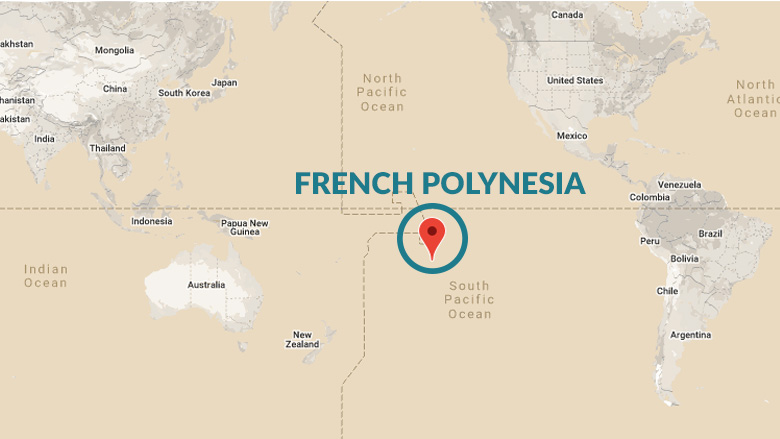Tahiti Travel Guide
The Complete Guide to French Polynesia
The Complete Guide to French Polynesia

The French Polynesia overseas territory covers an area of 2000 kilometers but is sparsely populated. The five archipelagos of the South Pacific have a population of only 250,000 people. Because of its vast geographical size, French Polynesia has multiple climate zones. Traveling to the southern islands, for example, can be even cooler.
The archipelago is in the same time zone as Hawaii, with a 12-hour time difference between Switzerland and French Polynesia. The most direct route to the islands is through Los Angeles. Tahiti’s main island is home to Papeete Airport, which is an excellent starting point for your trip to French Polynesia.
Tahiti is the largest island in French Polynesia’s Society Islands and is often used as a catch-all term for the entire archipelago. When visiting Tahiti, it is best to bring your snorkeling goggles with you at all times, as all of the beaches have beautiful crystal clear waters with always something new to discover.
A visit to the rarely visited island of Huahine is an insider tip for your trip to Tahiti. The ruins of the Maraes, who are considered the region’s indigenous people, can be found here. Because of its beauty, the island has been compared to the Garden of Eden.
French Polynesia is separated into five distinct archipelagoes or island groups. The territory is a French Republic semi-autonomous overseas entity. This Overseas Territory is made up of 118 islands that are physically separated throughout a 1200 square mile (2000 km) stretch of ocean in the South Pacific.
The Tahitian People are named after Tahiti, the largest and most inhabited island, with over 70% of the population.
The Society Islands are the largest of the five archipelagoes. Tahiti and its sister island Moorea offer a spectacular view of huge craggy mountain peaks and stunning turquoise lagoons. Huahine, Raiatea, Tahaa, and Bora Bora, also known as “The Pearl of the Pacific,” are part of the Society Islands Leeward group.
Divers can enjoy exceptional visibility while diving, hiking, and going on excursions, as well as visiting historical sites and museums.
With its magnificent emerald-green and turquoise-blue lagoon, Bora Bora is undoubtedly the most famous of all the islands. Overwater bungalows overlook the lagoon, which is surrounded by atolls and reefs. Every year, a rising number of ardent sun lovers and mesmerized tourists gather on these famous shores to pay homage to them.
The Tuamotu Archipelago is made up of 76 islands that cover a total area of 20,000 km2. The atolls are famed for their magnificent dive sites and pearls, but they’re also little paradises for anglers of all kinds, as well as explorers looking for unique and unexpected experiences.
Rangiroa, Manihi, Tikehau, Fakarava, Takapoto, Anaa, Mataiva, Kaukura, and many other islands make up the archipelago. Divers will enjoy the Rangiroa lagoon which is the largest lagoon in the world.
This archipelago will enchant you with its dizzying mountains, archaeological treasures, and ocean devoid of coral reefs. Tattooing, sculpting, outstanding traditional dances, and festivals will all be on display.
Its islands, such as Ua Huka, Hiva Oa, Fatu Hiva, Ua Pou, and Nuku Hiva, provide everything you need. You will be following in the footsteps of Gauguin and his last magnificent paintings while exploring the Austral Islands. Many wood carvings, a traditional Polynesian art form, can also be found.
This archipelago also includes five high islands with a milder, colder climate. Traditional handicraft is notably evident here, with baskets, hats, and mats made from pandanus by women.
Rimatara, Rurutu, Tubuai, Raivavae, Rapa, and Marotiri are the archipelago’s principal islands. You can participate in traditional Polynesian activities such as braiding and crafts, diving, potentially seeing whales, visiting caverns, and visiting the Marae (a sacred place constructed of volcanic stones).
It is made up of five high islands and 18 motus (islets) that are all connected by a single lagoon. The Gambier Islands are the most gorgeous pearl of the South Pacific, as you will soon discover. Mangareva, Temoe, Morane, Moruroa, Tematangi, Fangataufa, and Maria are among the Gambier Islands.
Polynesian crafts and pearls are primarily sold here.
French Polynesia has a rich history. The epic migration from Southeast Asia to the Pacific Islands began circa 4000 BC. This migration settled Tonga and Samoa circa 1300 BC. Tahitians colonized the Marquesas around 200 BC.
The Tahitian islands were colonized over several centuries. The South Pacific would follow. The “Polynesian Triangle” borders Hawaii, Easter Island, and New Zealand. Due to these migrations, indigenous Tahitians, Hawaiians, and New Zealand Maoris speak Ma’ohi and share ancestors.
French Polynesia is a group of five tropical archipelagoes in the middle of the South Pacific Ocean, 6,000 kilometers east of Brisbane, Australia, and 7,700 kilometers west of Lima, Peru.
118 islands and atolls cover nearly 4,500 square kilometers. They are a French foreign territory with little power. The Society Islands, the Gambier Islands, the Tuamotu Archipelago (the world’s largest chain of atolls, reaching 1,570 kilometers), the Marquesas Islands, and the Austral Islands are all part of French Polynesia (Tubuai Islands and Bass Islands).
Mont Orohena, at 2,241 meters, is the highest point of Tahiti, which has 4,167 km2.
Tropical means hot and humid. November to April is a warm rainy season, and May to October is a chilly dry season. The islands’ 20-degree latitude spread generates regional climatic variation.
Except for the Marquesas and northern Tuamotus, rainstorms are frequent. Annual rainfall is highest in coastal locations. Regional variations occur due to exposures; windward shores receive more precipitation.
Temperatures vary a little year-round. The average annual temperature in Papeete is 79 degrees Fahrenheit (26 degrees Celsius), with a high of 91 degrees (33 degrees Celsius) in March and a low of 70 degrees (21 degrees Celsius) in August.
Underwater species abound. Octopuses, various crabs, parrotfish, coral fish, trumpet fish, triggerfish, moray eels, groupers, and more reside here.
Tahiti is a tropical paradise with greens, yellows, magentas, and bright whites everywhere. Tahitian vanilla orchids, frangipani, heliconias, orchids, and the famed Tiare flower have intense scents.
Tahitians today reflect their Maori ancestors’ rich, expressive culture. They return to Tahitian life, where gods, warriors, and people cross in figurative legends. Island life-inspired music, dancing, and art.
The rich Tahitian culture is found in many events and festivals. The July “Heiva I Tahiti dance festival” or the Hawaiki Nui Vaà outrigger canoe race.
Polynesians relied on subsistence farming before colonialism. In agriculture and fishing, the population set the groundwork for a successful future. Today, tourism dominates the economy. Deep-sea fishing and pearl cultivation are crucial. Exports include copra, vanilla, sugar, rum, and pearls.
Tahiti and her islands and atolls make up French Polynesia, a country made up of five island groups or archipelagoes in the South Pacific.
689
The Central Pacific Franc is the official currency of French Polynesia’s islands (international abbreviation: XPF). In February 2022, $1 is worth approximately 150 XPF. Please keep in mind that not all islands have ATMs! When traveling to Maupiti, you should withdraw enough money ahead of time because paying in cash is the norm here. However, there is no ATM and thus no way to withdraw money.
On the larger islands, major credit cards are accepted in most places. On the smaller islands, cash may be required for transactions.
The official language of French Polynesia is French, but the majority of the locals speak Reo Mao’hi. From my own observations, English is only spoken by a small percentage of the population outside of tourist areas. Nonetheless, it is possible to visit the islands without knowing French.
Depending on the location, hotels use either 110 or 220 volts. A converter/adapter is frequently required for bringing appliances, including computers.
Approximately 75% are Polynesian, 15% are European, and 10% are Chinese.
The majority of the population is Christian (Protestant and Roman Catholic), with a minority of Latter-day Saints and Jehovah’s Witnesses.
Since 2003, French Polynesia has been a French overseas collectivity (COM), or overseas country within the Republic of France, which means that the local government has some autonomy but no jurisdiction over justice, higher education, security, or defense. Interested in politics, read about French Polynesian politics here.
Tipping is not common practice in Tahiti.
TAHT (Time Zone) (UTC -10hrs)

Your Travel Guide to the Tahitian Islands
Like us on FACEBOOK
Tahiti Tourism | Air Tahiti Nui | Air Moana
All trademarks, logos, and brand names are the property of their respective owners.
